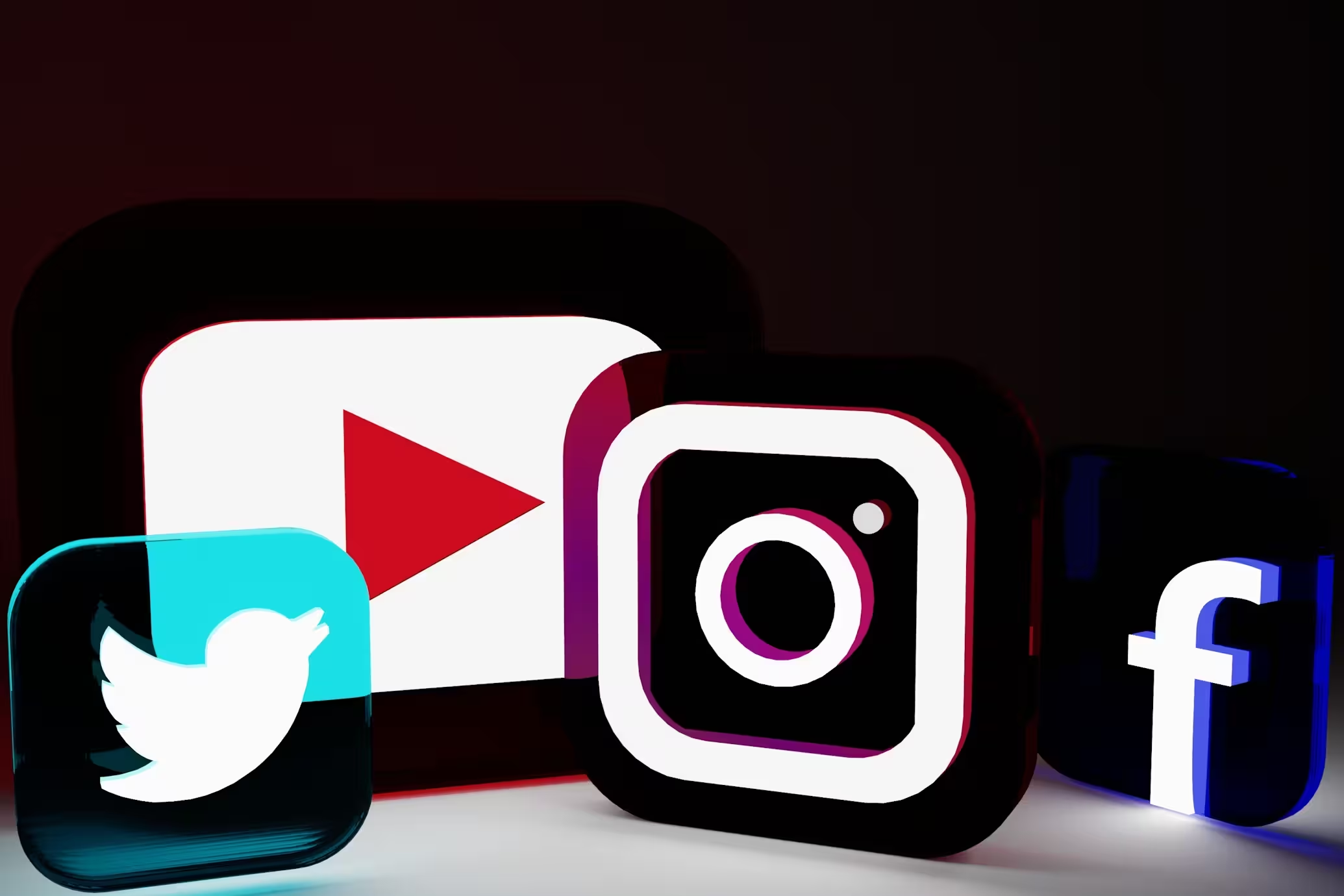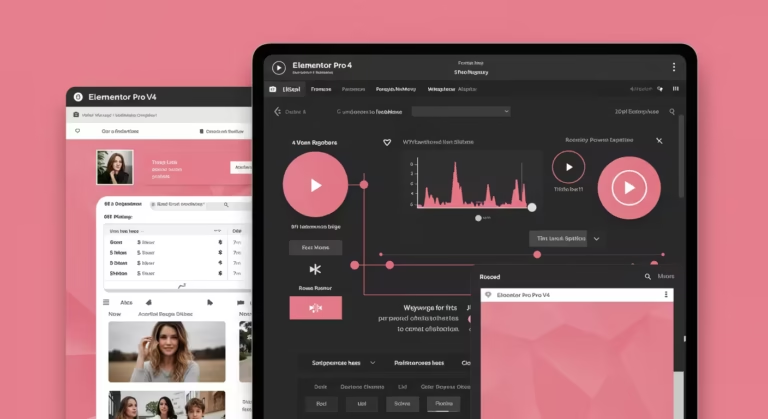Leveraging the right social media management tools is crucial for businesses aiming to enhance their online presence, streamline operations, and engage effectively with their audience. Below, we present a curated list of the top 10 social media management tools for 2025, each offering unique features to cater to diverse business needs.
As one of the largest social media management companies in the Highlands, we have experience using all of these, and we provide our unique insights into our personal thoughts on each. In this article, we also provide helpful video tutorials so you can get started using each tool straight away.
1. Hootsuite
Hootsuite remains a comprehensive solution for managing multiple social media platforms. It offers features like bulk scheduling, real-time analytics, and team collaboration tools, making it suitable for businesses of all sizes.
Hootsuite is a powerful and versatile social media management platform, offering a comprehensive suite of tools designed to streamline social media operations for businesses of all sizes. This all-in-one solution enables organisations to effectively manage multiple social media accounts, create engaging content, and optimise their social media strategy.
At the core of Hootsuite’s functionality is its unified dashboard, which allows users to connect and manage various social media profiles from a single, centralised console. The platform supports over 150 app integrations, including popular tools like Mailchimp and HubSpot, enhancing its versatility and making it an indispensable tool for social media marketers.
With features such as bulk scheduling, users can plan and schedule up to 350 posts at once, significantly reducing the time and effort required for content management.
From a social media expert’s perspective, Hootsuite’s strength lies in its ability to foster team collaboration while maintaining brand consistency and security. The platform’s team collaboration tools allow for efficient workload distribution, with features like simplified inbox assignments, team chats, and permission settings at various levels. This makes it particularly valuable for agencies and larger organisations managing multiple clients or brands.
Additionally, Hootsuite’s robust analytics capabilities, including sentiment analysis and competitive benchmarking, provide invaluable insights that can inform and refine social media strategies.
For a helpful tutorial on using Hootsuite, particularly its analytics and collaboration features, we recommend the following YouTube video: “How to Share and Collaborate with Hootsuite Analytics”
This video provides a comprehensive guide on creating and sharing analytics reports with team members and stakeholders, demonstrating how to leverage Hootsuite’s collaborative features effectively.
2. Buffer
Buffer is known for its straightforward scheduling capabilities and user-friendly interface. It supports various platforms and provides analytics to track post performance, aiding in refining social media strategies.
Buffer stands out as a powerful and intuitive social media management tool, offering a streamlined approach to content scheduling and performance tracking across multiple platforms. This versatile solution empowers marketers to efficiently manage their social media presence, optimise engagement, and refine their strategies based on data-driven insights.
At its core, Buffer provides a user-friendly interface that simplifies the process of planning and scheduling social media content. The platform supports a wide range of social networks, including Facebook, Instagram, Twitter, LinkedIn, and Pinterest. With Buffer’s social media calendar, users can easily visualise their content strategy, ensuring a consistent and well-timed flow of posts across all connected accounts.
The tool’s scheduling capabilities allow for bulk uploads and suggest optimal posting times based on audience activity, maximising reach and engagement potential.
As social media experts, we appreciate Buffer’s commitment to continuous improvement and adaptability. The platform consistently stays ahead of the curve, often being one of the first to support new social media features and platforms. For instance,
Buffer was among the pioneers in enabling auto-publishing for Instagram Stories, demonstrating its agility in responding to platform updates.
Additionally, Buffer’s analytics suite provides valuable insights into post performance, audience demographics, and engagement metrics, allowing marketers to make data-driven decisions and refine their social media strategies effectively.
The ability to create custom reports and track key performance indicators across multiple channels makes Buffer an indispensable tool for both small businesses and larger organisations looking to optimise their social media presence.
For a helpful tutorial on using Buffer effectively, the following comprehensive step-by-step tutorial is a great place to start.
3. Sprout Social
Sprout Social combines powerful analytics with robust engagement tools. It’s Smart Inbox feature consolidates messages from different platforms, allowing for efficient communication management.
Sprout Social is a robust social media management platform that combines powerful analytics with advanced engagement tools to help businesses optimise their social media strategies. One of its standout features is the Smart Inbox, which consolidates messages from multiple social platforms into a single, unified dashboard. This feature enables businesses to efficiently manage communication, assign tasks, and respond promptly to customer enquiries.
Sprout Social also excels in providing detailed analytics, such as follower analysis, sentiment analysis, and post-performance tracking, helping marketers identify trends and measure the impact of their campaigns.
Additionally, the platform supports content scheduling, campaign optimisation, and competitor analysis, making it a comprehensive solution for managing social media operations.
The Smart Inbox is particularly valuable for streamlining workflows and fostering team collaboration. It allows users to tag messages, assign them to team members, and track their status through real-time activity updates.
This ensures that no message goes unanswered while maintaining accountability within teams. Sprout Social’s analytics tools further enhance its value by offering insights into both organic and paid performance, hashtag effectiveness, and audience engagement metrics.
These insights help businesses refine their strategies and maximise ROI. With support for platforms like Facebook, Instagram, Twitter, LinkedIn, and more, Sprout Social adapts to the needs of businesses of all sizes.
From a social media expert’s perspective, Sprout Social is a game changer for communication management. The Smart Inbox not only saves time but also ensures that every customer interaction is handled efficiently. Its ability to integrate seamlessly with various social networks and provide actionable data makes it an indispensable tool for agencies and in-house teams alike.
The user-friendly interface and customisable reporting features further enhance its appeal, allowing marketers to focus on strategy rather than administrative tasks.
The following tutorial video by Sprout Social gives a step-by-step tutorial on how to get the most out of Sprout Social.
4. Zoho Social
Zoho Social offers real-time monitoring and scheduling features, making it ideal for businesses looking to enhance their social media presence. Its integration with Zoho CRM provides a seamless experience for managing customer relationships.
Zoho Social stands out as a comprehensive social media management platform, offering a robust suite of features designed to streamline and optimise social media operations for businesses of all sizes. This versatile tool combines powerful scheduling capabilities with real-time monitoring and analytics, making it an essential asset for companies aiming to enhance their social media presence and engage effectively with their audience.
At the core of Zoho Social’s functionality is its intuitive scheduling system, which includes features like SmartQ for optimal posting times, bulk scheduling of up to 350 posts, and the ability to create content queues for consistent posting. The platform supports multiple social media channels, including Facebook, Twitter, Instagram, LinkedIn, and more, allowing users to manage their entire social media strategy from a single, unified dashboard.
Zoho Social’s real-time monitoring capabilities enable businesses to track brand mentions, engage with audience interactions, and stay on top of relevant conversations across various social platforms.
As social media experts, we particularly appreciate Zoho Social’s seamless integration with Zoho CRM, which bridges the gap between social media marketing and sales activities.
This integration allows for efficient lead generation by automatically syncing leads from social media interactions to the CRM system. The ability to view CRM data directly within the social media management interface enhances the sales team’s ability to engage with prospects effectively and close deals faster.
Additionally, Zoho Social’s analytics tools provide valuable insights into post performance, audience engagement, and overall social media strategy effectiveness, enabling data-driven decision-making and continuous improvement of social media campaigns.
For a helpful overview of Zoho Social, watch the following video by Drew Brockbank.
5. Sendible
Sendible is designed for agencies managing multiple clients. It offers customisable dashboards, client management tools, and supports a wide range of social platforms, streamlining workflow for social media managers.
Sendible stands out as a powerful social media management platform tailored specifically for agencies handling multiple clients. This comprehensive tool offers a range of features designed to streamline workflows, enhance collaboration, and provide detailed analytics for social media managers.
At the core of Sendible’s functionality is its intuitive, stylised dashboard that allows agencies to manage multiple social media accounts efficiently. The platform supports a wide array of social networks, including Facebook, Twitter, Instagram, LinkedIn, and more, enabling users to schedule content, engage with audiences, and monitor brand mentions across various platforms from a single interface.
Sendible’s Smart Compose Box facilitates quick and easy content creation and scheduling, while its Priority Inbox consolidates messages and comments from different platforms, allowing for efficient communication management.
From a social media expert’s perspective, Sendible’s strength lies in its agency-focused features. The platform’s white-labelling solutions allow agencies to create custom-branded dashboards for each client, reinforcing their brand identity and potentially generating more revenue.
The Client Connect feature is particularly valuable, enabling agencies to securely manage clients’ social accounts without sharing login details. Additionally, Sendible’s robust collaboration tools, including custom user permission groups and approval workflows, ensure smooth teamwork and maintain content quality.
The platform’s detailed analytics and reporting capabilities, including integration with Google Analytics, provide actionable insights that help refine social media strategies and demonstrate ROI to clients.
The following video by Sendible, gives a high level overview of the platform for people new to the platform.
6. SocialBee
SocialBee focuses on content categorisation and recycling, ensuring a consistent posting schedule. Its user-friendly interface and affordable pricing make it suitable for small to medium-sized businesses.
Sendible stands out as a powerful social media management platform tailored specifically for agencies handling multiple clients. This comprehensive tool offers a range of features designed to streamline workflows, enhance collaboration, and provide detailed analytics for social media managers.
At the core of Sendible’s functionality is its intuitive, branded dashboard that allows agencies to manage multiple social media accounts efficiently. The platform supports a wide array of social networks, including Facebook, Twitter, Instagram, LinkedIn, and more, enabling users to schedule content, engage with audiences, and monitor brand mentions across various platforms from a single interface.
Sendible’s Smart Compose Box facilitates quick and easy content creation and scheduling, while its Priority Inbox consolidates messages and comments from different platforms, allowing for efficient communication management.
From a social media expert’s perspective, Sendible’s strength lies in its agency-focused features. The platform’s white-labelling solutions allow agencies to create custom-branded dashboards for each client, reinforcing their brand identity and potentially generating more revenue.
The Client Connect feature is particularly valuable, enabling agencies to securely manage clients’ social accounts without sharing login details. Additionally, Sendible’s robust collaboration tools, including custom user permission groups and approval workflows, ensure smooth teamwork and maintain content quality.
The platform’s detailed analytics and reporting capabilities, including integration with Google Analytics, provide actionable insights that help refine social media strategies and demonstrate ROI to clients.
The following video tutorial gives a full review of the Social Bee Platform.
7. Pallyy
Pallyy is tailored for visual platforms like Instagram and TikTok. It offers a visual planner, hashtag suggestions, and analytics, catering to content creators and brands focusing on visual content.
Pallyy stands out as a powerful social media management tool specifically designed for visual platforms, making it an ideal choice for content creators and brands focused on image-centric networks like Instagram and TikTok. This versatile platform combines robust scheduling capabilities with advanced analytics and visual planning tools to streamline social media workflows.
At the core of Pallyy’s functionality is its intuitive visual planner, which allows users to create and preview their social media content calendar with ease. The drag-and-drop interface enables effortless scheduling and rearranging of posts, while the grid preview feature helps maintain a cohesive aesthetic for Instagram feeds.
Pallyy supports multiple social networks, including Instagram, Facebook, Twitter, LinkedIn, Google Business, Pinterest, and TikTok, allowing users to manage their entire social media presence from a single dashboard.
As social media experts, we particularly appreciate Pallyy’s focus on Instagram-specific features. The platform offers advanced tools like first comment scheduling, bio link management, and detailed Instagram analytics, including post performance, profile insights, and story analytics.
The hashtag suggestion feature is especially valuable, helping users discover relevant and trending hashtags to increase their content’s reach and engagement. Additionally, Pallyy’s competitor tracking functionality allows brands to benchmark their performance against others in their industry, providing valuable insights for strategy refinement.
Dani’s Tutorials Youtube channel provides a helpful tutorial on how to se the Pallyy platform.
8. Metricool
Metricool provides a comprehensive suite of tools, including scheduling, analytics, and competitor analysis. Its affordability and range of features make it a valuable tool for businesses aiming to optimise their social media strategy.
Metricool stands out as a comprehensive social media management platform, offering a robust suite of tools designed to streamline and optimise social media strategies for businesses of all sizes. This versatile solution combines powerful scheduling capabilities, in-depth analytics, and competitor analysis features, making it an essential asset for social media managers and marketers.
At the core of Metricool’s functionality is its intuitive content planning and scheduling system. The platform supports multiple social networks, including Facebook, Instagram, X (Twitter), TikTok, LinkedIn, and more, allowing users to manage their entire social media presence from a single, unified dashboard.
Metricool’s visual planner enables users to schedule content in advance, preview Instagram feeds, and select optimal posting times based on audience activity.
The platform also offers auto lists and bulk upload features, ensuring a consistent and efficient content flow across all connected accounts.
As social media experts, we particularly appreciate Metricool’s advanced analytics and competitor analysis capabilities. The platform provides detailed insights into post performance, audience demographics, and engagement metrics, enabling data-driven decision-making and strategy refinement.
The competitor analysis tool allows users to track up to 100 competitors (for premium accounts), offering valuable benchmarking data on follower growth, content strategies, and engagement rates. This feature is especially useful for identifying industry trends, content gaps, and opportunities for improvement.
Additionally, Metricool’s AI-powered social media assistant helps create engaging content tailored to brand voice and audience preferences, further enhancing its value proposition.
Joe Zeplin provides a step-by-step tutorial in the following video.
9. Loomly
Loomly is a collaborative platform that assists in content creation and scheduling. It provides post ideas and optimisation tips, making it beneficial for teams working on social media campaigns.
Loomly stands out as a comprehensive social media management platform designed to streamline content creation, scheduling, and collaboration for teams working on social media campaigns. This versatile tool offers a range of features that simplify the content creation process and optimise social media strategies.
At the core of Loomly’s functionality is its intuitive content calendar, which serves as the central workspace for managing social media accounts.
The calendar view provides a clear overview of scheduled posts across multiple platforms, allowing users to easily plan and organise their content strategy. Loomly supports a wide range of social networks, including Facebook, Instagram, Twitter, LinkedIn, Pinterest, TikTok, and more, enabling users to manage their entire social media presence from a single, unified dashboard.
As social media experts, we particularly appreciate Loomly’s focus on content ideation and optimisation. The platform’s post ideas feature provides inspiration based on Twitter trends, holidays, and RSS feeds, ensuring that users never run out of content ideas. Additionally,
Loomly’s post optimisation tips offer valuable insights on how to improve post performance, including suggestions for media, optimal posting times, and copywriting length. These features are especially beneficial for teams looking to maintain a consistent and engaging social media presence.
The following video by Loomly provides a 5 minute tutorial on how to use the social media mgmt platform.
10. Later
Later specialises in visual content scheduling, particularly for Instagram. Its drag-and-drop interface and visual content calendar simplify the planning process, aiding brands in maintaining a cohesive aesthetic.
Later stands out as a powerful social media management tool specifically designed for visual content scheduling, with a strong focus on Instagram. This platform offers a range of features that streamline the content creation and scheduling process for brands, influencers, and social media managers.
At the core of Later’s functionality is its intuitive visual content calendar and drag-and-drop interface. These features allow users to easily plan and preview their social media content, ensuring a cohesive aesthetic across their feeds. The visual Instagram feed preview is particularly valuable, enabling users to see exactly how their grid will look before publishing, which is crucial for maintaining brand consistency on image-centric platforms.
As social media experts, we appreciate Later’s commitment to simplifying the visual content planning process. The platform’s ability to schedule various types of content, including single posts, carousels, Stories, and Reels, makes it a versatile tool for managing a comprehensive Instagram strategy.
Additionally, Later’s media library feature allows users to store and organise all their visual content in one place, making it easily accessible for future use.
The following video provides a useful tutorial on how to use Later for Social Media Management in 2025.
In Summary
In conclusion, leveraging the right social media management tools is crucial for businesses aiming to optimise their online presence and engage effectively with their audience. From comprehensive platforms like Hootsuite and Buffer to specialised tools like Pallyy for visual content, there’s a solution for every social media strategy.
These tools not only streamline workflows but also provide valuable insights through analytics, helping businesses refine their social media tactics and achieve better results.
The Inverness Design Studio offers professional social media management services, utilising cutting-edge tools and strategies to help companies in Inverness and beyond enhance their digital footprint. By partnering with experts who understand the nuances of social media platforms and the latest management tools, businesses can focus on their core operations while ensuring a strong, consistent, and engaging social media presence.
Whether you’re a small local business or a growing brand, investing in effective social media management can significantly impact your online visibility, customer engagement, and ultimately, your bottom line.
With the right tools and expertise, such as those offered by the Inverness Design Studio, companies can navigate the complex world of social media with confidence and achieve their marketing goals in the ever-evolving digital landscape.
Visit our social media management page to find out more.



